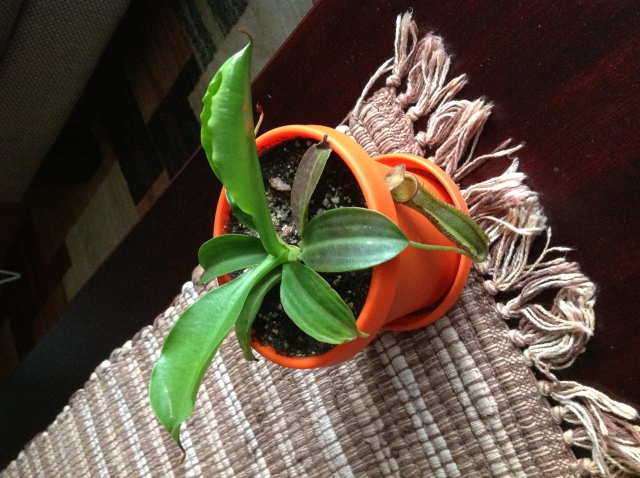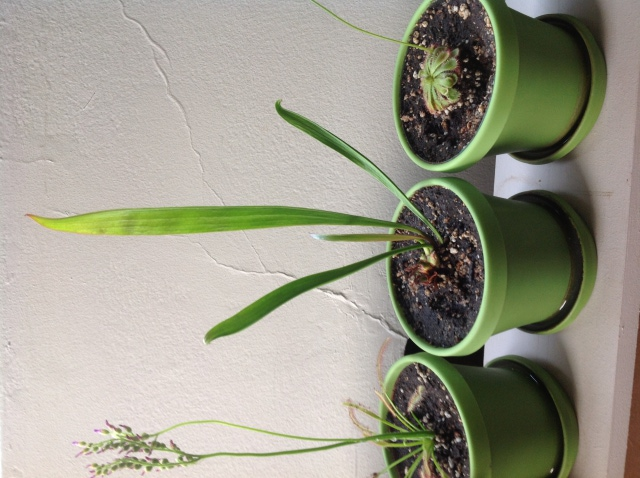Question
 Monkey cup
Monkey cup  Pitcher plant
Pitcher plant
Hi Cristopher,
We recently bought a monkey cup and pitcher plant, both very young. In the mean time both have grown a few leaves, but the pitchers/cups do not appear. Do they usually take very long? We've had them for about 3 months already, with only leaves appearing. How long does a monkey cup and pitcher plant usually take to develop?
Any advice please?
Thank you.
Regards,
Philip
AnswerHello Philip,
The Asian Pitcher Plant (Monkey Cup), Nepenthes, in the orange pot usually takes about 1-3 or even more months to develop pitchers according to species, lighting, temperature, and humidity as well as specific environmental needs of individual species. You might want to ask the supplier what exact species you are dealing with. Young Nepenthes can be occasionally difficult to identify until they have more adult leaves and pitchers. Once you have the species places, you will be able to perform searches on that species environmental needs.
In general, Nepenthes like very bright, but just shy of, direct, full sun. They do well under a large tree or in a well lit window or under at least 12000 lumens of artificial, cool white, florescent lights. In lower light conditions, they can fail to pitcher.
Nepenthes that suffer from a fast change in humidity or temeprature can suffer from shock and fail to pitcher for months.
Each species has a different rate of pitchering activity. Some pitcher constantly from virtually every leaf, some barely produce a single pitcher at a time from one of a dozen leaves.
Nepenthes are tropical and will grow year round in adequate light and temperatures.
The Sarracenia you have in the green pot between the Sundews is exhibiting signs of low light. In low light, they will fail to produce pitchers or will produce deformed pitchers.
Sarracenias are North American plants that require winter dormancy and direct, full sun all day in the growing season. About now the plants will be waiting for winter and getting ready for dormancy. They produce non-pitchering leaves in winter and die back in very cold weather until the weather warms. Sarracenias require a winter dormancy to survive in the long term. Winter dormancy occurs in low light levels in daylengths of light of under 8 hours a day and in cold weather of around 40 degrees for about 3-4 months.
Christopher







